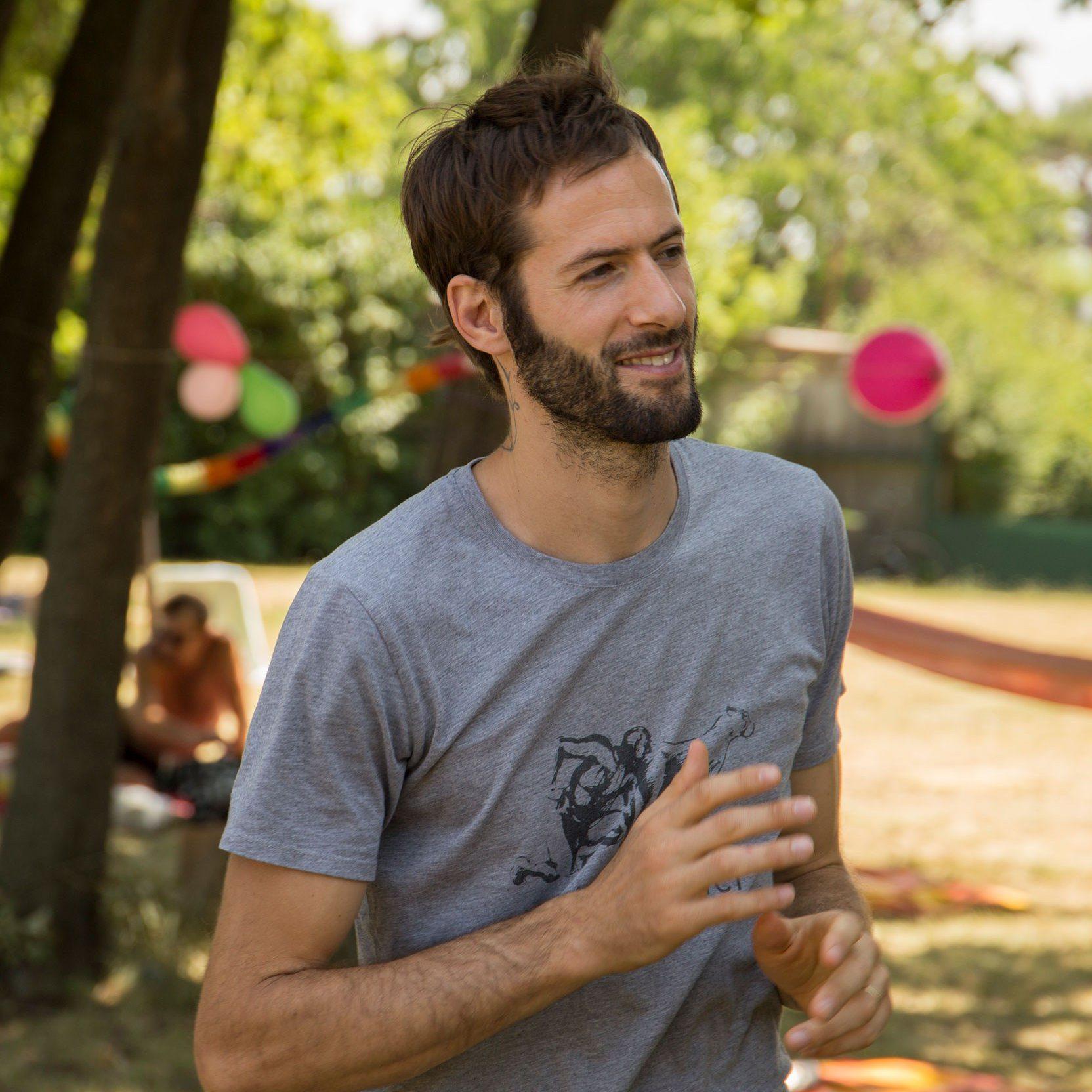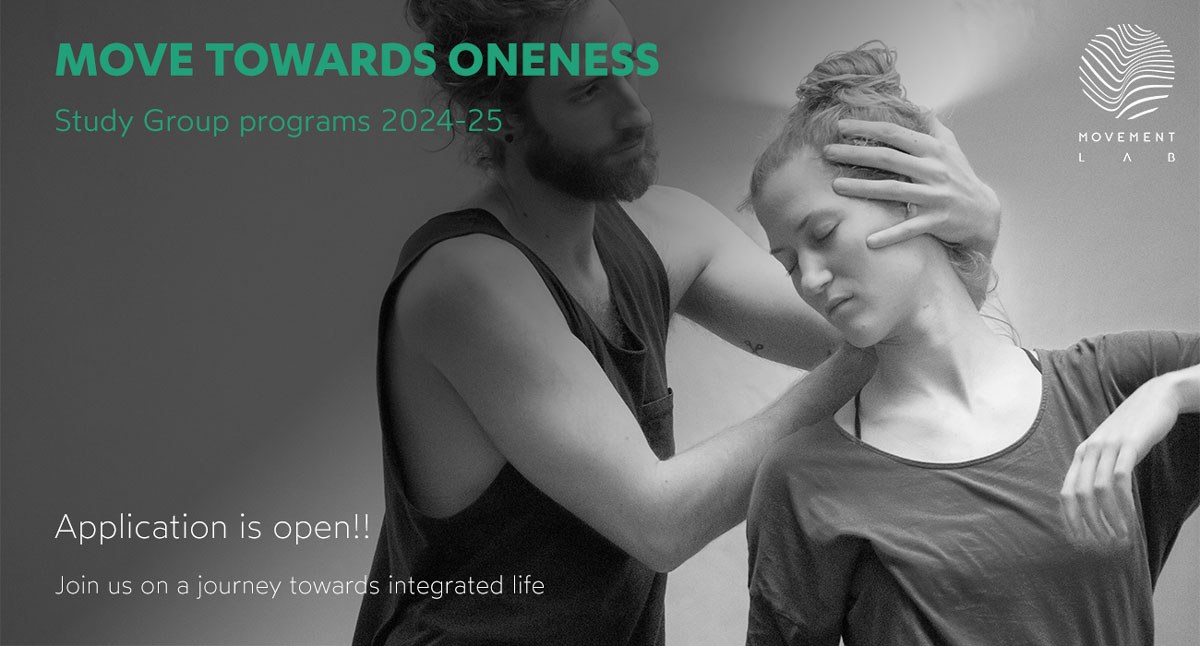Leading from the unknown
 by Matan Levkowich
by Matan LevkowichI have been invited by Deborah Smith Wicke, the director of SOZO (a dance school in Kassel, Germany) to create a dance performance for the 1st year students. During a three week period, I was tasked with choreographing a dance piece alongside the students in preparation for a dance performance. Although I am teaching in SOZO every year, I haven't previously met this particular group before and didn’t know what could be expected dance wise from these students.
Leading a creative process is hard work. It entails spending many hours in the studio with the dancers, working under pressure of a deadline and going through an emotional rollercoaster together, all the while dealing with all sorts of unexpected problems.
Writing these sentences I can already hear the critical voice of my good friend Richard Sarco Thomas, a working class man from the UK: “What the hell are you complaining about, problems of spoiled middle class artists”. Now don’t get me wrong, choreographing people is not hard labour but it is a very complex mental task. It requires the choreographer to hold simultaneously two intrinsically different mental/emotional states - to let go of control and to set up safe boundaries for the process.
The prerequisite for novelty in my choreographic work is the ability to rest in a state of ‘not knowing’. A state in which I have abandoned the desire to control the outcome of the process. Letting go of control in such a fundamental way is not easy, as the studio is quite an ambiguous space in which uncertainty prevails. The prevalence of uncertainty is a good breeding ground for anxiety, all the more when the dancers are looking up to you for guidance.
Relaxing into such a situation can be a great challenge in and of itself, and yet it is paramount for the ability to provide a safe space for the dancers. Perhaps it is easier said than done, but I also remind myself that in any case, pervasive anxiety isn’t really helping anyone involved in the creative process..
Let me try to offer an analogy - Imagine that you are the captain of a sailing boat. You are leading a crew of 12 people across the ocean. After a stormy night, you wake up to realise that you got lost and there is no land in sight. In this very moment, any decision you will take will have unknown outcomes. Can you still cultivate trust in your leadership while leading from the unknown?
Leading a choreographic process is very different in nature than operating a sailing boat, and being lost in the studio is nothing in comparison to being lost in the sea. One important difference to note is how one situation carries a significant physiological effect; getting lost in the sea is an undesirable outcome for any captain but getting lost in the studio is an absolutely essential phase for the choreographer.
Would you be willing to lead a boat knowing that you are going to get lost? This is the prerequisite for the choreographer.
What is a good approach to confront such a problem? Allow me to share several strategies.
First and foremost, I find it absolutely necessary to avoid acting out overly confident aka ‘fake it until you make it’. I want to work with dancers who allow themselves to be who they are, to be authentic and transparent. So I try my best to exemplify this behaviour.
How? I start by listening to myself. When I find internal clarity, I communicate to the dancers where I am. And when the moment arrives and I find myself lost, they can rely on the fact that they know that I am lost and they don’t need to try to figure out what is going on and where I am. Allowing for clear and transparent communication of states of uncertainty, allows peers to be “in on the process” thereby finding more clarity as new information presents itself and the process “works itself out”.
Such a working environment encourages vulnerability, making ‘mistakes’, being silly, being intuitive etc. And these qualities are like the ‘search and rescue’ squad that helps to orient me back to shore, to find my way back into clarity when I get lost in the process.
The underlying lesson for me (that is not limited to choreography) is that a leader doesn’t need to be an all mighty person that has all the answers, can solve all the problems, and holds him/herself as independent from the group. It is actually quite the contrary - a good leader knows how to outsource the process of solving the problems back to the group - to trust the group’s brain. The only necessary thing for me to do is to create the conditions that enable the individuals around me to flourish, at which point I can easily give myself the permission to fall once more, to get lost in the wonders of creativity.
What if we could take this perspective into a wider context, outside of work relations? Can we view our lives as a creation process which unfolds all on its own? A creation process that we don’t have to control and make by ourselves. A creation process that invites us to find our redemption through the minds of others.
Join our community online!
Did you enjoy this article? Don't miss the next one!
Subscribe to our newsletter and we'll deliver the next article directly to your inbox.
If you wish, we'll include you when announcing special events and online courses.
